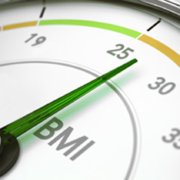Can You Be Obese and Healthy?
The research question that was most interesting to me as a graduate student was this: could you be overweight, even obese, and still be healthy? That question still interests me today, and for good reason: 70% of the U.S. population is overweight or obese, and we’ve just passed 40% of the entire population falling into the obese category. And it’s not just the U.S.; we’ve exported our poor fitness and diet habits around the world.
Research done decades ago from by Cooper Institute, most often under the direction of Steven Blair, demonstrated that you could be fat and fit. Their research showed that people who were obese, meaning they had a BMI greater than or equal to 30.0, were no more at risk for death from cardiovascular disease or all-cause mortality if they were in the high fitness category.
That’s not the same question as this: could you be metabolically healthy and at no more risk for death from cardiovascular disease or all-cause mortality than someone with a normal BMI (18.5-24.9 kg/m2)? Researchers from Germany decided to examine that question. They used data collected from the National Health and Nutrition Education Survey III, which included over 12,000 subjects, and the U.K. Biobank, which contained over 374,000 subjects. Then they examined the statistical relationship between many different variables such as triglycerides, total cholesterol, hemoglobin A1C, C-reactive protein, systolic blood pressure, and on and on. Once they had a series of statistical relationships between obesity and mortality, then they sought to derive as simple an algorithm as they could to develop a profile of someone who would be metabolically healthy and obese. I’ll tell you more about that in Saturday’s memo.
Meanwhile, have you examined that map that was part of the CDC atrial fibrillation primer? Here’s what I saw: I’ll call it the I-75 Corridor of A-fib. Starting in Flint, MI, if you follow the pattern of the deepest red, it follows I-75 through Detroit to Toledo, OH, then Cincinnati, OH, and all the way down through Georgia to Florida. That’s the I-75 Corridor of A-Fib. What does it mean? Nothing, as far as I know; it doesn’t correspond to race or income or temperature. It’s an observation, nothing more, but maybe some epidemiologist or statistician somewhere will look into in more deeply.
What are you prepared to do today?
Dr. Chet
Reference: JAMA Net Open. doi:10.1001/jamanetworkopen.2021.8505









